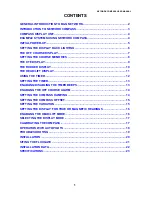
Figure 28
Figure 29
Figure 30
Figure 31
3. Place scale vertically, until bound by both
latitude
lines, and next to the “X”. (Fig 30)
-
Important:
Make sure scale increases with
increasing latitude and longitude lines.
4. At the “X”, add value indicated by the scale
(0’ 50”) to the lowest latitude value (43
o
02’ 30”)
- Add values similar to time on a clock.
43
o
02’ 30”
+ 00’ 50”
43
o
02’ 80” =
43
o
03’ 20” N. Latitude
5. Now, slope scale until bound by both
longitude
lines, and
next to the “X”. (Fig 31)
6. At the “X”, add the scale value (1’ 15”) to the lowest
longitude value (108
o
22’ 30”)
108
o
22’ 30”
+ 01’ 15”
108
o
23’ 45” =
108
o
23’ 45” W. Longitude
Before entering a position from a map into your GPS receiver,
make sure your GPS receiver is set up with the
same
local
geodetic datum as the map. If datum of map is unknown, or
GPS receiver does not have a map datum, enter WGS-84.
9.2.b -- Plotting a GPS Position On a Map
Your GPS receiver says your location is:
43
o
02’ 00” N.
Latitude
by
108
o
23’ 40” W. Longitude,
using:
NAD-27.
Now, you would like to plot the position on a 1:24k topo-map.
1. Using the GPS position, and the latitude-longitude lines you drew in Figure 29, identify the one
rectangle (out of 9 rectangles), that completely surrounds the GPS position.
- The rectangle is in the lower right-hand corner, because value 43
o
02’ 00” N. latitude is between
the 43
o
00’ 00” N. and 43
o
02’ 30” N. labels, and the value 108
o
23’ 40” W. longitude is between
the labels 108
o
22’ 30” W. and 108
o
25’ 00” W., on the map.
2. Using the smallest
latitude
label (43
o
00’ 00” N.) on the rectangle, determine the amount you must
10










































